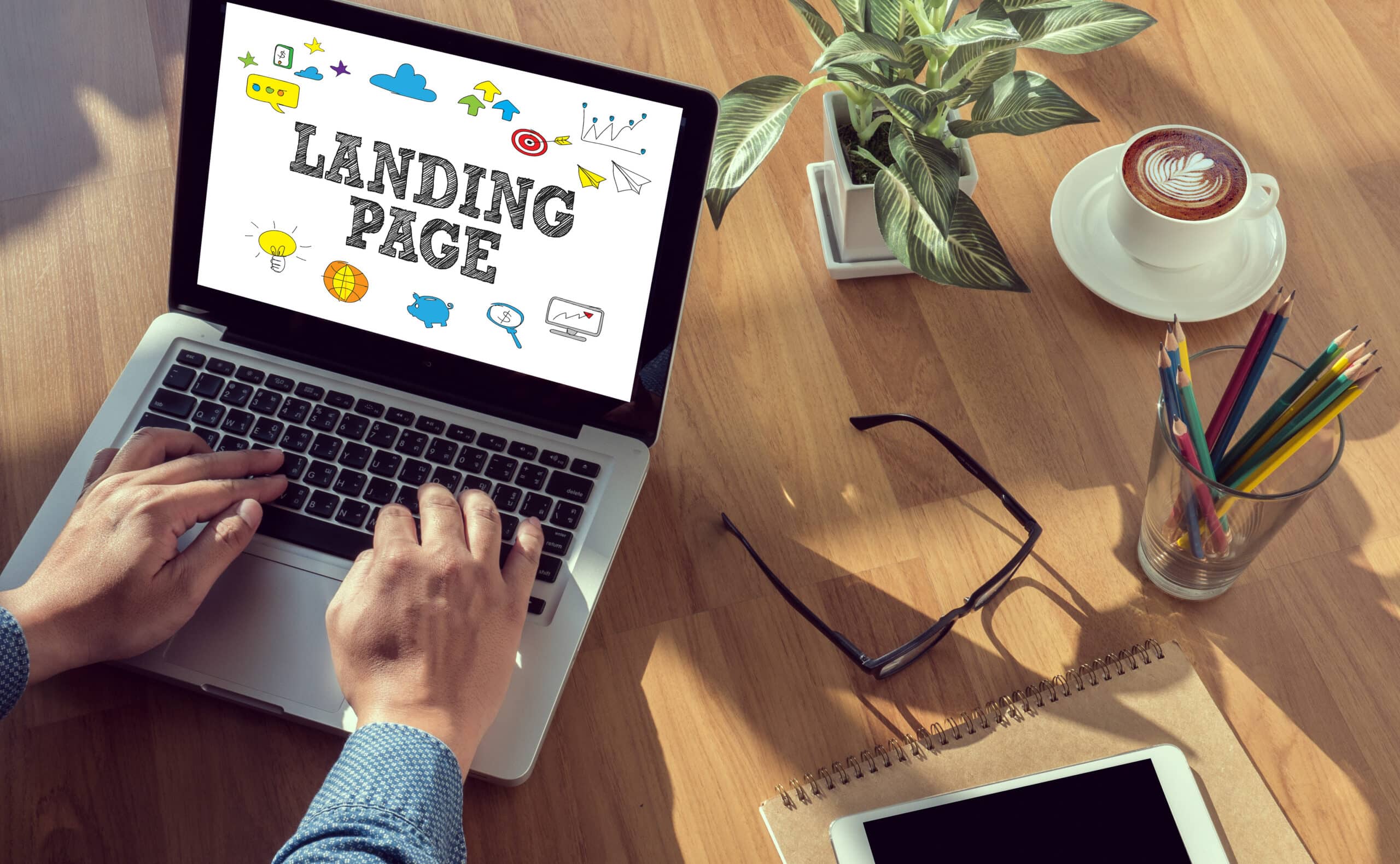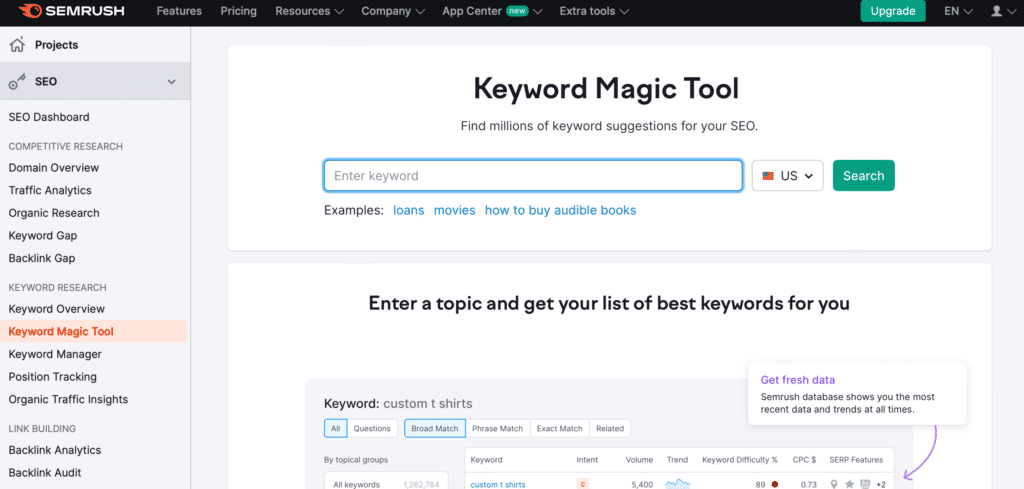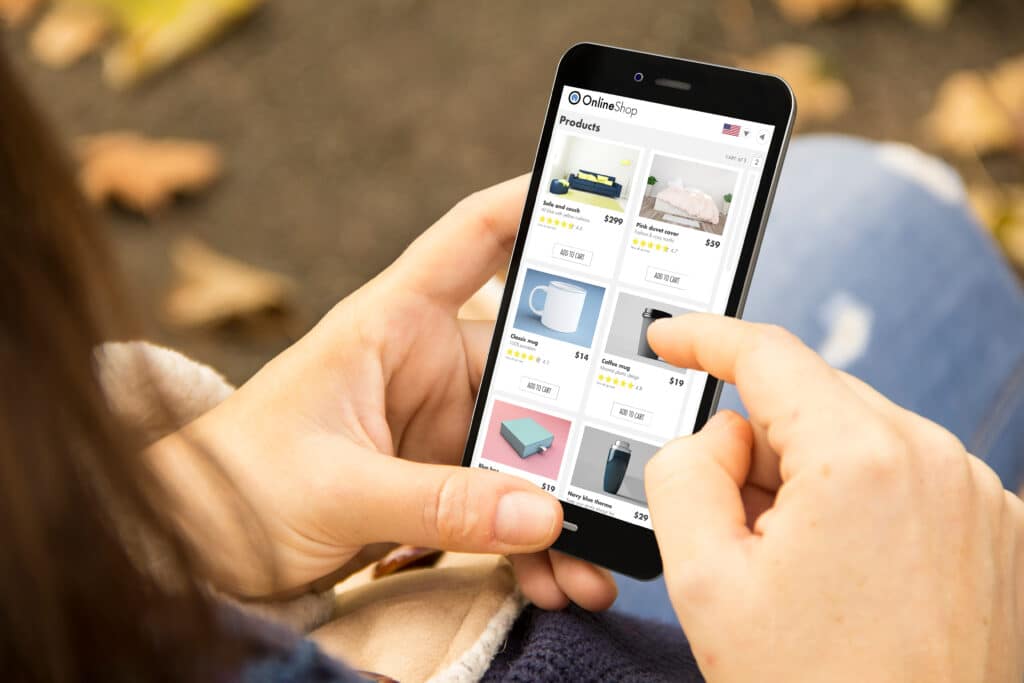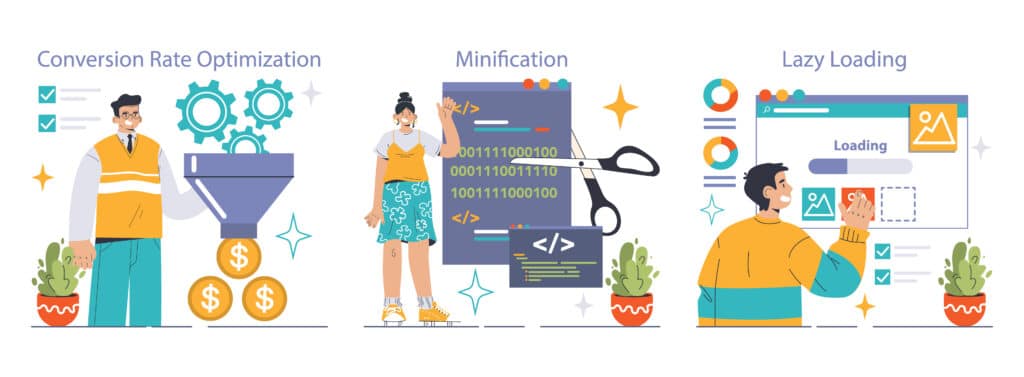Optimising Landing Pages: A Game Changer for Google Ads
 Reading Time: 9 minutes
Reading Time: 9 minutes
In the world of online marketing, Google Ads reign supreme. However, even the most meticulously crafted ad campaign can fall flat if your landing pages aren’t properly optimised and converting. This in-depth article talks about why optimising landing pages is a real game changer for Google Ads.
Table of Contents
Understanding the Connection between Google Ads and Landing Pages
Imagine a potential customer, intrigued by your Google Ad, clicking on it with curiosity. Where do they end up? Your landing page. This is more than just a random web page; it’s a strategically designed portal aimed at converting these visitors into tangible leads or customers. It’s like an extended handshake from your Google Ad, offering more depth, more persuasion, more convincing reasons for the visitor to take a specific action – be it a purchase or a sign-up.
This is where the magic of conversion happens. Hence, it is vital to realise that the efficacy of your landing page is inextricably linked to the success of your Google Ads campaign. This is why understanding the connection between your Google Ads and landing pages can be a game-changer. It’s not enough to just create captivating ads; one must ensure the landing pages are optimised to seal the deal. That’s the synergy of Google Ads and landing pages – a powerful combination, if well-optimised, can really maximise your marketing efforts and ROI.
Identifying the Core Elements of an Effective Landing Page
At the heart of every successful landing page lie several critical components. First up, an engaging headline that grabs attention instantly and resonates with your ad message is a must. This is closely followed by copy that is both concise and engaging, providing a clear explanation of the advantages of what you’re offering. Visually striking images and videos should be used to reinforce and enrich your message.
Equally important are trust indicators – think testimonials or social proof that lends credibility to your brand. These reassure visitors that others have benefited from your offering, and they could too. The final piece of the puzzle is an irresistible call-to-action (CTA). This should guide visitors, motivating them to complete the desired action, whether that’s signing up for a newsletter or making a purchase (similar to our own CTA shown below).
In a nutshell, your landing page should be a finely tuned machine, each component working in harmony to effectively convert visitors into leads or customers. And remember, the most effective landing pages aren’t static, but are constantly tested and refined based on performance data.
Optimising Landing Page Content for Higher Conversions
The real power of your landing page lies in its content. To ramp up your conversion rates, it’s crucial that the content on your landing page is razor-sharp, relatable, and convincing. Start with a headline that’s not just catchy, but also directly communicates the benefit of your offering. Your subheadings too, need to pack a punch, drawing the reader into the narrative.
When it comes to your core content, remember it’s not about you, it’s about them – your potential customers. The aim is to artfully showcase your product or service as the solution to their problems, the answer to their needs. Steer clear of long-winded paragraphs – keep your copy crisp, focused, and filled with value propositions. Break down complex ideas into bullet points for easier consumption, ensuring your visitors grasp your message swiftly and effectively.
Remember, a landing page flooded with information is a sure-fire way to deter visitors. The key is to provide just enough information to guide the visitors towards the desired action, without overwhelming them. Be mindful of this balance when you craft your content. And finally, even though we’re not delving into CTAs in this section, it’s worth noting that your content should naturally and seamlessly lead your visitors towards your call-to-action, effectively setting the stage for the conversion.
Utilising Keywords for Landing Page Optimisation
Harnessing the power of keywords is crucial when refining your landing pages for maximum impact. They form a significant link between your Google Ads and your landing pages, ensuring your potential customers can find your ads and consequently, land on your page. The importance of integrating relevant keywords in your headlines, subheadings, and main body text cannot be overstated. This vital step aids not only in enhancing your Search Engine Optimisation (SEO) but also in affirming to your visitors that they’ve clicked on the right link and have arrived at a destination that can answer their needs or solve their problems.

The above image is a screenshot from SEM Rush, a valuable SEO tool that can provide intelligent insights into the keywords your customers are using.
Think of keywords as a beacon, guiding your audience from the vastness of the internet right to your landing page. Therefore, these keywords need to be selected with precision. Choose words and phrases that your audience would naturally use when seeking out a product, service or solution like yours. Use keyword research tools, such as SEM Rush Keyword Magic Tool, to get a handle on the words your potential customers are using, and infuse these intelligently into your content.
However, remember that while keywords are crucial, they should never compromise the readability and relevancy of your content. The objective is not to stuff your landing page with keywords, but to weave them in a manner that feels organic and seamless. Keywords should serve as subtle signposts, leading your visitors deeper into your narrative, and ultimately, towards your call-to-action.
Enhancing User Experience for Better Conversions
Creating an engaging user experience (UX) on your landing page can significantly boost your conversion rates. Consider your landing page as the first impression potential customers have of your brand. If it’s aesthetically pleasing, logically structured, and simple to navigate, it sends a positive signal, making your visitors more inclined to take the desired action.
The design of your landing page should be visually attractive, with a well-structured layout that effortlessly guides your visitors towards your call-to-action. Keep the design clean and clutter-free to avoid overwhelming your audience. Leverage striking images or videos, paired with compelling content, to tell a persuasive story that resonates with your visitors.
Forms, if any, should be straightforward and uncomplicated to fill out, reducing friction for your visitors. Your CTA button should be eye-catching and strategically positioned, drawing the visitor’s attention and enticing them to click.
Remember, a seamless user experience goes beyond just design. Fast loading times, mobile optimisation, and clear messaging all contribute to this. If your landing page is slow to load, overly complex, or difficult to understand, it can deter visitors and undermine your conversion rates.
In short, focusing on the user experience of your landing page can make the difference between a potential customer bouncing off or converting into a lead. Crafting a landing page that is not only visually pleasing but also easy to navigate and user-friendly can significantly enhance your chances of success. After all, a happy visitor is far more likely to become a happy customer.
Maximising Mobile Compatibility for Landing Page Success
In today’s digital age, the majority of online searches are conducted on the move, using mobile devices (hence why Google now prioritises mobile first indexing). This undeniable shift towards mobile usage makes it imperative to ensure that your landing pages are fully mobile-compatible. This is not just about ticking a box on the checklist; a mobile-optimised landing page can be the difference between securing a conversion or losing a potential customer.
A well-optimised mobile landing page adjusts seamlessly to fit any screen size. This adaptability, known as responsive design, is key to ensuring that every visitor, regardless of the device they use, is presented with a visually appealing and easy-to-navigate landing page. From your headline to your call-to-action, every element should be clearly visible and intuitive to interact with on a smaller screen.

Ensure your webpages are set up correctly for smart phone and tablet users.
A key part of mobile optimisation is testing. It is crucial to test your landing page thoroughly on various devices and screen sizes to ensure that every visitor enjoys a smooth and engaging user experience. Any issues, no matter how minor they seem, could potentially disrupt the customer’s journey and compromise your conversion rates.
By paying careful attention to mobile compatibility, you can effectively reach out to your mobile audience, providing them with an optimised user experience that facilitates conversion. This attention to detail can result in enhanced engagement, improved conversion rates, and ultimately, greater success in Boosting Your Google Ads Campaigns. After all, your landing page should be a portal to your business that is open to all, regardless of the device they use to access it.
Boosting Landing Page Speed: An Often Overlooked Factor
Often, in our quest for an impeccable landing page, we neglect one essential aspect – the speed at which it loads. Although it may seem trivial in the grand scheme of things, your page’s load time can have a significant impact on your conversions. If your page takes too long to load, it can lead to visitor frustration, causing them to abandon the page and consequently, increase your bounce rate. Therefore, the emphasis on optimising your landing page speed cannot be overstated.
There are several ways to turbocharge your landing page speed. One of them is to compress your images. High-quality images are integral to your landing page, but they can also slow down your page. Compressing these images can reduce their file size without compromising their quality, leading to faster loading times.

Boosting Landing Page Speed can have a real impact on the performance of your Google Ads (as well as your SEO). This article from The Search Engine Journal explains its importance in more detail.
The minification of CSS and JavaScript is another effective method. This involves removing unnecessary characters from your code without changing its functionality, which can significantly reduce your file sizes and, subsequently, your loading times.
Utilising a Content Delivery Network (CDN) can also expedite your content delivery. A CDN is a network of servers strategically located around the world. When a visitor requests your page, the server nearest to them delivers it, reducing the time taken to load your page.
To understand your page’s speed performance better, consider using Google’s PageSpeed Insights tool. This tool analyses your page and provides you with insights into your page speed along with suggestions on how to improve it.
Remember, every second counts in the digital world. An optimised landing page speed can enhance your user experience, reduce your bounce rate, and increase your conversions, making it a vital component of your Google Ads strategy.
Call-to-Action Best Practices for Improved Landing Page Conversions
The importance of an effective call-to-action (CTA) in driving up landing page conversions cannot be overstated. Your CTA serves as the catalyst, nudging your visitors towards the final goal – be it a purchase, sign-up, or any other desired action. In this context, the following best practices can prove invaluable in optimising your CTA for improved landing page conversions.
Start with language that compels action. For example, rather than using passive phrases, opt for direct, action-oriented language that instils a sense of urgency in the visitor. Phrases such as “Download Now”, “Sign Up Today” or “Start Your Free Trial” can be more effective in motivating visitors to act.
Next, focus on making your CTA visually striking. A colour scheme that contrasts with the rest of your page can make your CTA button stand out, drawing the visitor’s attention towards it. Be mindful of the size and placement of the button too. It should be easily visible and placed strategically on the page to facilitate the user’s journey towards the final action.
Lastly, remember that a single, focused CTA is often more effective than multiple ones that can confuse or distract the visitor. Keep your CTA simple, clear, and centred on a single action to guide your visitors smoothly towards conversion.
In conclusion, an optimised CTA, bolstered by compelling language, striking visuals, and strategic placement, can significantly enhance your landing page conversions, driving success for your Google Ads campaigns.
PS: Remember…the cheapest way to double sales and/or enquiries is to double your conversion rate.

